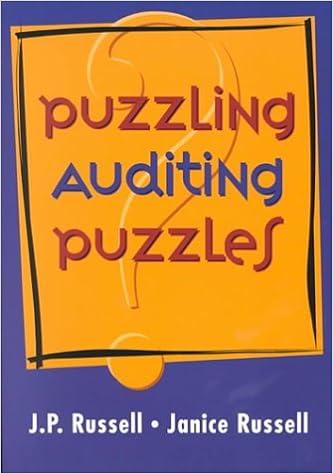Required information Exercise 6-21 Complete the accounting cycle using inventory transactions (L06-2, 6-3, 6-5, 6-6, 6-7) [The following information applies to the questions displayed below.) On January 1, 2021, the general ledger of Big Blast Fireworks includes the following account balances: Accounts Cash Accounts Receivable Allowance for Uncollectible Accounts Inventory Land Accounts Payable Noten Payable (68, due in 3 years) Common Stock Retained Earnings Totals Debit Credit $ 25,700 46,000 $4,100 49,000 90, 100 25,700 49,000 75,000 57,000 $210,000 $210,800 The $49,000 beginning balance of inventory consists of 490 units, each costing $100. During January 2021, Big Blast Fireworks had the following inventory transactions: January 3 Purchase 1, 750 units for $196,000 on account ($112 each). January 8 Purchase 1,850 units for $216,450 on account ($117 cach). January 12 Purchase 1,950 units for $237.900 on account ($122 each). January 15 Return 195 of the units purchased on January 12 because of defects. January 19 Sell 5,700 units on account for $855,000. The cost of the units sold is determined using a FIPO perpetual inventory system. January 22 receive $837,000 from customers on accounts receivable. January 24 Pay $620,000 to inventory suppliers on accounts payable. January 27 Write of accounts receivable as uncollectible, $2,800. January 31 Pay cash for salaries during January, $138,000. The following information is available on January 31, 2021 Totals $210, HUU $210, HUU The $49,000 beginning balance of inventory consists of 490 units, each costing $100. During January 2021, Big Blast Fireworks had the following inventory transactions: January 3 Purchase 1,750 units for $196,000 on account ($112 each). January 8 Purchase 1,850 units for $216, 450 on account ($117 each). January 12 Purchase 1,950 units for $237,900 on account ($122 each). January 15 Return 195 of the units purchased on January 12 because of defects. January 19 Sell 5,700 units on account for $855,000. The cost of the units sold is determined using a FIFO perpetual inventory system. January 22 Receive $837,000 from customers on accounts receivable. January 24 Pay $620,000 to inventory suppliers on accounts payable. January 27 Write oft accounts receivable as uncollectible, $2,800. January 31 Pay cash for salaries during January, $138,000. The following information is available on January 31, 2021. a. At the end of January, the company estimates that the remaining units of inventory are expected to sell in February for only $100 each b. The company estimates future uncollectible accounts. The company determines $5,900 of accounts receivable on January 31 are past due, and 35% of these accounts are estimated to be uncollectible. The remaining accounts receivable on January 31 are not past due, and 5% of these accounts are estimated to be uncollectible. (Hint: Use the January 31 accounts receivable balance calculated in the general ledger.) C. Accrued interest expense on notes payable for January, Interest is expected to be paid each December 31. d. Accrued income taxes at the end of January are $14,200. View transaction list Journal entry worksheet 7 8 9 10 Record purchase of 1,750 units for $196,000 on account ($112 each). Note: Enter debits before credits. Date General Journal Debit Credit January 03 Record entry Clear entry View general Journal









